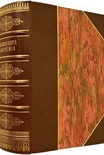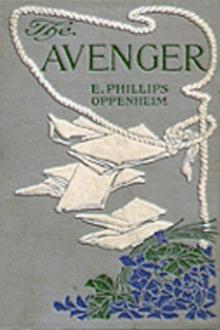Hitler's Terror Weapons, Brooks, Geoffrey [cat reading book .txt] 📗

Book online «Hitler's Terror Weapons, Brooks, Geoffrey [cat reading book .txt] 📗». Author Brooks, Geoffrey
CHAPTER 11
The First and Last Voyage of the German Submarine U-234
HIDEO TOMONAGA, a Samurai, held the rank of captain in the Imperial Japanese Navy and was credited with the invention of an automatic depth-keeping device for submarines. On 27 April 1943, southeast of Madagascar, he transferred from the Japanese submarine 1-29 under Captain Yoichi to Korvettenkapitän Musenberg’s U-boat U-180. He brought with him a few items of luggage – three one-man torpedoes, a 3-cm gas-pressure self-loading cannon and, in a large number of smaller cases, a quantity of gold ingots destined for the Japanese Embassy in Berlin and said to be payment for German technology. There was in fact so much gold, probably several tonnes of it, that the U-boat chief engineer found it useful to help trim the submarine. In June 1943 U-180 arrived safely at the French Biscay base of Bordeaux, and Captain Tomonaga went off to do whatever it was that he had come for. 121 He would reappear in the story twenty months later on the U-boat quay at Kiel.
The Preparation and Loading of U-234
The seven U-boats of Type XB were the largest in the Kriegsmarine, displacing 2,700 tonnes full load submerged. They had been designed as minelayers, and for this purpose were equipped with thirty mineshafts capable of carrying sixty-six mines, but in general were used as ocean replenishment boats, the so-called Milchkühe. 294 feet long and 30 feet in the beam, the class had diesel-electric propulsion providing a maximum surfaced speed of 17 knots and 7 knots submerged. The most economic cruising speed was 10 knots which gave them a range of 21,000 miles and made them ideal for long-distance cargo missions to Japan, which could be reached from Germany without refuelling.
U-234 had been damaged by bomb hits in 1942 and May 1943 while under construction and was not launched until 23 December 1943. The boat was commissioned by Kapitänleutnant Johann Heinrich Fehler on 3 March 1944 and spent the next five months either in the builders’ yard or working-up in the Baltic. Once the training period had been completed successfully, she put into Germania Werft at Kiel on 30 August 1944 for a major refit and conversion from a minelayer into a transport submarine. The important changes were the installation of a snorkel, an air intake mast enabling submerged travel under diesel propulsion and the removal of the twenty-four lateral mineshafts to create cargo stowage compartments. The outer keel plates were removed and the keel duct remodelled to receive a cargo of mercury and optical glass.
U-234 emerged from the yards on 22 December 1944 for trials. The commander had meanwhile been summoned to OKM in Berlin to be informed that U-234 was to take important war material and twenty-seven passengers to Tokyo. Fehler argued that this number was unreasonable. They would take the place of eighteen crew members and endanger the mission. After some negotiation a compromise was struck in which twelve passengers would travel, one acting as No 1 watch-keeping officer. These would replace eight crew members. It appears from American declassified papers that a special commission, Marinesonderzweigstelle Heimat under Korvettenkapitän Becker, decided in December 1944 what cargo was to be carried. The OKM Liaison officer for Japan, Kapitän zur See Souchon, discussed the cargo with Japanese Military Attaché Kigoishi.
In January 1945 the final preparations were begun for the voyage to Tokyo. A Hohentwiel radar was installed which gave the boat the priceless advantage of detecting an approaching aircraft before the latter could get a fix on the submarine, but it could heat up severely if left working too long. Dr Schlicke, a former Director of the Telecommunications Testing Station at Kiel Arsenal, a passenger who had shipped aboard early, arranged in Berlin a two-for-one swap to eliminate the radar-overheating problem.
The cargo was loaded under conditions of the strictest secrecy. Over 100 tonnes of mercury in 50-lb iron bottles went into the keel ducts. Elsewhere engineering and weapons blueprints, cameras, lenses, fuses, barrels and bales, secret documents in sealed containers, even an Me 262 jet aircraft in its component parts were stowed in the holds amidships. 122 Some of the six forward upright tubes through the foredeck were packed with anti-tank and small flak rockets, and Panzerfäuste.
The most important witness to all this activity was Oberfunkmeister Wolfgang Hirschfeld, the senior radio operator of U-234. A good observer of detail, who kept an illicit diary later published as a book, 123 he described how from a perch on the conning tower he saw an SS-lorry draw up on the quayside alongside the U-boat at Kiel one February morning in 1945 and unload the most important and secret item of cargo, a large number of small and immensely heavy metal cases of uniform size which looked about nine inches along each each side. He saw a military officer whom he later knew to be Japanese Military Attaché Kigoishi looking on.
After a few moments he noticed something which struck him as distinctly odd, for among the small knot of German crewmen working on the foredeck there were two Japanese officers who appeared to be supervising the loading. They were seated on a crate, occupied in painting a description in black characters including the formula ‘U-235’ on the brown paper wrapping gummed around each of the small, heavy containers. They were so numerous that he couldn’t count them, but certainly there seemed to him to be well over fifty little cases. 124
These two Japanese, who were to travel aboard U-234 on the voyage to Tokyo, were Air Force Colonel Genzo Shosi, an aeronautical





Comments (0)